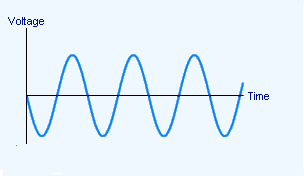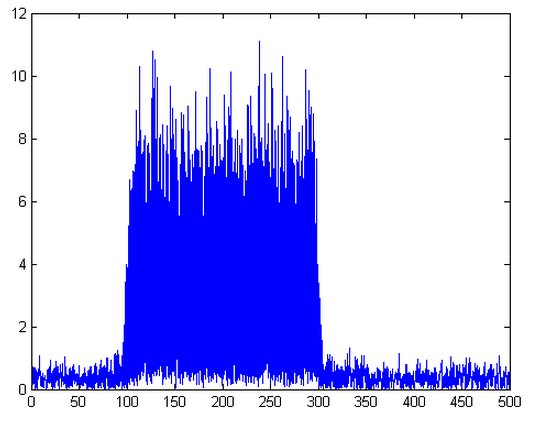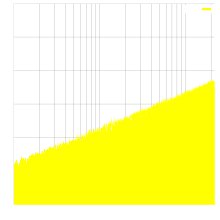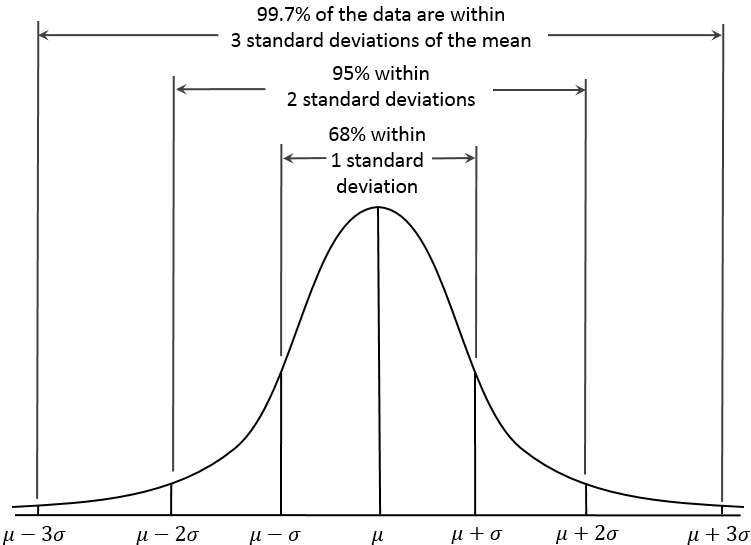Difference between revisions of "About tCS"
AlejandroR (talk | contribs) |
Roger.puig (talk | contribs) |
||
| (26 intermediate revisions by 3 users not shown) | |||
| Line 14: | Line 14: | ||
tDCS (transcranial Direct Current Stimulation) is a kind of tCS where the stimulation currents are held constant (as in DC current), and the most popular and used of tCS techniques. | tDCS (transcranial Direct Current Stimulation) is a kind of tCS where the stimulation currents are held constant (as in DC current), and the most popular and used of tCS techniques. | ||
| − | In general terms, anodal stimulation (current is injected into the brain) over a cortical region has excitatory effects, and cathodal (current is collected from the brain) has inhibitory effects. | + | In general terms, '''anodal''' stimulation (current is injected into the brain) over a cortical region has excitatory effects, and '''cathodal''' |
| + | (current is collected from the brain) has inhibitory effects. | ||
tDCS stimulation produce short term effects (increase/decrease) on neuronal excitability, and long lasting plastic after-effects involving synaptic modification (see, e.g., Marquez et al., 2012 and references therin). These underlie the clinical utility of tDCS . | tDCS stimulation produce short term effects (increase/decrease) on neuronal excitability, and long lasting plastic after-effects involving synaptic modification (see, e.g., Marquez et al., 2012 and references therin). These underlie the clinical utility of tDCS . | ||
| + | |||
| + | |||
| + | [[File:Tdcs_signal.png| 300 px]] | ||
| + | |||
| + | Visual representation of a transcranial Direct-Current Stimulation | ||
= What is tACS? = | = What is tACS? = | ||
Like tDCS, tACS is a form of tCS where the transcranial stimulation currents are time dependent with a sinusoidal shape (as in AC current). Amplitude, frequency and relative phases across stimulation electrodes can be controlled. tACS stimulation may provide a powerful way to couple to the oscillatory behavior of the brain, which is at present an active research field in basic and clinical Neuroscience. | Like tDCS, tACS is a form of tCS where the transcranial stimulation currents are time dependent with a sinusoidal shape (as in AC current). Amplitude, frequency and relative phases across stimulation electrodes can be controlled. tACS stimulation may provide a powerful way to couple to the oscillatory behavior of the brain, which is at present an active research field in basic and clinical Neuroscience. | ||
| + | |||
| + | |||
| + | |||
| + | [[File:tacs stimulation.png| 300 px]] | ||
| + | |||
| + | |||
| + | Visual representation of a transcranial Alternating-Current Stimulation | ||
= What is tRNS? = | = What is tRNS? = | ||
| Line 29: | Line 42: | ||
- Full-band tRNS: the tRNS is generated for the entire band of the device, from 0 to 500Hz. | - Full-band tRNS: the tRNS is generated for the entire band of the device, from 0 to 500Hz. | ||
| − | - Bandpassed tRNS: the full-band tRNS is filtered using a bandpass filter (low pass and high pass inlcuded). Then the tRNS is only applied in a certain band (i.e. 100- | + | - Bandpassed tRNS: the full-band tRNS is filtered using a bandpass filter (low pass and high pass inlcuded). Then the tRNS is only applied in a certain band (i.e. 100-300 Hz). This can be configured in NIC from version 1.3.12 on. If we bandpass in a certain band we can obtain the following frequency plot: |
| − | |||
| − | |||
| − | |||
| − | |||
| − | |||
Bandpass filtered tRNS frequency plot: | Bandpass filtered tRNS frequency plot: | ||
| Line 49: | Line 57: | ||
tRNS stimulation intensity: | tRNS stimulation intensity: | ||
| − | When configuring the intensity of the stimulation in the NIC software you will notice that the upper limit is 650 | + | When configuring the intensity of the stimulation in the NIC software you will notice that the upper limit is STD = 650. This value represents the standard deviation. As you can see in the figure below, if we select tRNS to have a standard deviation of 650, we will have: |
- 99.7% of our current values between -1950 uA and 1950 uA (3 x 650) | - 99.7% of our current values between -1950 uA and 1950 uA (3 x 650) | ||
| Line 61: | Line 69: | ||
[[File:Std_deviation.png|400px]] | [[File:Std_deviation.png|400px]] | ||
| + | |||
| + | |||
| + | We generate white noise in the band from 0-500 Hz. It is a uniform distribution in time (decorrelated), but it is draw from the Gaussian at each sample. | ||
| + | |||
| + | [[File:Image.png|400px]] | ||
| + | |||
| + | When you bandpass the signal, it does become correlated in time (it is no longer White Noise). This is easy to understand, because bandpassing is equivalent to convolution in time (which correlates the data) | ||
= What is Sham stimulation? = | = What is Sham stimulation? = | ||
| Line 68: | Line 83: | ||
In StarStim Sham is implemented by ramping down (slowly) the current immediately after the ramp up period, and by ramping up (slowly) the current right before the final ramp down portion of the session. This way, the subject feels the ramp up and ramp down events (which are the most noticeable in tCS), but does not receive a significant dose of tCS. | In StarStim Sham is implemented by ramping down (slowly) the current immediately after the ramp up period, and by ramping up (slowly) the current right before the final ramp down portion of the session. This way, the subject feels the ramp up and ramp down events (which are the most noticeable in tCS), but does not receive a significant dose of tCS. | ||
| − | = What should a modern tCS device offer? | + | This modulation of the envelope of stimulation applies to tDCS, tACS and tRNS components of the stimulation. |
| + | |||
| + | See [[About_Sham_and_Double-blind_experiments | here]] for further info on Sham and double-blind modes. | ||
| + | |||
| + | = What should a modern tCS device offer? Starstim design guidelines: = | ||
Latest revision as of 13:08, 21 January 2020
Brain function can be modified by applying a weak electrical current using contact electrodes placed over the scalp (transcranial). This kind of brain stimulation receives the name of transcranial Current Stimulation (tCS). To learn more, please read our review on tCS models and technologies<ref>Giulio Ruffini, Fabrice Wendling, Isabelle Merlet, Behnam Molaee-Ardekani, Abeye Mekonnen, Ricardo Salvador, Aureli Soria-Frisch, Carles Grau, Stephen Dunne, and Pedro C. Miranda, Transcranial Current Brain Stimulation (tCS): Models and Technologies, IEEE TRANSACTIONS ON NEURAL SYSTEMS AND REHABILITATION ENGINEERING, VOL. 21, NO. 3, MAY 2013 </ref> <ref> Brain Stimulation: models, experiments and open questions, HIVE deliverable D1.1, hive-eu.org, June 2009 </ref>. You can also find more information on tCS at http://hive-eu.org.
To date, the most studied tCS type is transcranial Direct Current Stimulation (tDCS).
The basic version of this idea is simple: a current is injected using a battery to the brain through one electrode placed over the scalp above the targeted brain cortical area, and recruited by return electrodes positioned over the scalp, or, alternatively, at an extracephalic position.
Using scalp electrodes, tCS generates weak electrical currents and electric fields (measured in Volts per meter) in the brain. These electric fields modulate neuronal activity.
The main differentiating features of tCS techniques are a) the delivery of weak currents through the scalp (with electrode current intensity to area ratios of about 0.3-5 A/m2) b) at low frequencies (typically < 1 kHz) resulting in weak electric fields in the brain (with amplitudes of about 0.2-2 V/m).
Contents
What is tDCS?
tDCS (transcranial Direct Current Stimulation) is a kind of tCS where the stimulation currents are held constant (as in DC current), and the most popular and used of tCS techniques. In general terms, anodal stimulation (current is injected into the brain) over a cortical region has excitatory effects, and cathodal (current is collected from the brain) has inhibitory effects. tDCS stimulation produce short term effects (increase/decrease) on neuronal excitability, and long lasting plastic after-effects involving synaptic modification (see, e.g., Marquez et al., 2012 and references therin). These underlie the clinical utility of tDCS .
Visual representation of a transcranial Direct-Current Stimulation
What is tACS?
Like tDCS, tACS is a form of tCS where the transcranial stimulation currents are time dependent with a sinusoidal shape (as in AC current). Amplitude, frequency and relative phases across stimulation electrodes can be controlled. tACS stimulation may provide a powerful way to couple to the oscillatory behavior of the brain, which is at present an active research field in basic and clinical Neuroscience.
Visual representation of a transcranial Alternating-Current Stimulation
What is tRNS?
tRNS (transcranial Random Noise Stimulation) is a type of tCS where the stimulation current is varied randomly. Unlike tDCS, tRNS has been recently introduced and there is little experience with its use. However, it appears as if its main effects are excitatory.
Types of tRNS:
- Full-band tRNS: the tRNS is generated for the entire band of the device, from 0 to 500Hz.
- Bandpassed tRNS: the full-band tRNS is filtered using a bandpass filter (low pass and high pass inlcuded). Then the tRNS is only applied in a certain band (i.e. 100-300 Hz). This can be configured in NIC from version 1.3.12 on. If we bandpass in a certain band we can obtain the following frequency plot:
Bandpass filtered tRNS frequency plot:
- Coloured tRNS: the tRNS is generated following a linear slope at the frequency domain. This slope can be positive or negative. This function is only available from MatNIC.
Coloured tRNS frequency plot:
tRNS stimulation intensity:
When configuring the intensity of the stimulation in the NIC software you will notice that the upper limit is STD = 650. This value represents the standard deviation. As you can see in the figure below, if we select tRNS to have a standard deviation of 650, we will have:
- 99.7% of our current values between -1950 uA and 1950 uA (3 x 650)
- 95% of our current values between -1300 uA and 1300 uA (2 x 650)
- 68% of our current values between -650 uA and 650 uA (1 x 650)
Notice that we can also introduce an offset if we want a different than 0 mean value.
We generate white noise in the band from 0-500 Hz. It is a uniform distribution in time (decorrelated), but it is draw from the Gaussian at each sample.
When you bandpass the signal, it does become correlated in time (it is no longer White Noise). This is easy to understand, because bandpassing is equivalent to convolution in time (which correlates the data)
What is Sham stimulation?
Sham stimulation is a generic term to indicate an inactive form of stimulation (e.g., a very brief or weak one) that is used in research to control for the placebo effect. The subject believes he/she is being stimulated normally, but there should not be any real effects.
In StarStim Sham is implemented by ramping down (slowly) the current immediately after the ramp up period, and by ramping up (slowly) the current right before the final ramp down portion of the session. This way, the subject feels the ramp up and ramp down events (which are the most noticeable in tCS), but does not receive a significant dose of tCS.
This modulation of the envelope of stimulation applies to tDCS, tACS and tRNS components of the stimulation.
See here for further info on Sham and double-blind modes.
What should a modern tCS device offer? Starstim design guidelines:
These are the requirements in which we based our tCS design:
- Current control at each electrode
This ensures that the Electric field in the brain is held constant/controlled (e.g., a simple battery system will not ensure this, since the actual electric fields induced in the brain will depend on contact impedance at the electrodes)
- Multiple channels for better control of the spatial distribution of the electric fields - Use of standard sponge electrodes or more modern Ag/AgCl EEG like electrodes - Ease of use despite complexity of the technology - Multiple waveforms: tDCS, tACS and tRNS - Measurement of EEG before, during and after stimulation - Safety features including maximal currents and impedance control
<references/>





